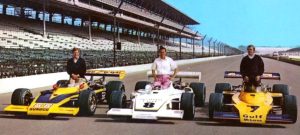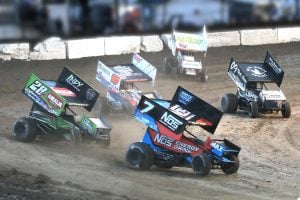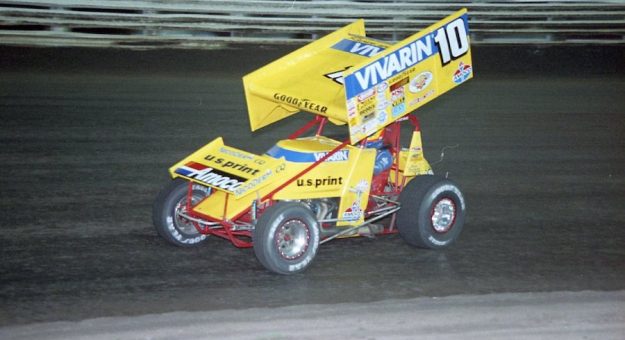50 Years Ago – 1973
Sprint Car Series Debuts: The Jan. 10, 1973, issue of NSSN introduced race fans to a new sprint car series to be known as the All Star Circuit of Champions.
“While many national sprint car organizations limit their events to members only, the All Star Circuit will be open to any driver who wishes to compete, regardless of affiliation,” said series president Bud Miller. “The purpose of our series is to crown a true world sprint car champion, not a club champion.”
“There has never been a true sprint car world champion and I want to win the title before moving on,” said “outlaw” racer Jan Opperman.
And Opperman did just that, topping three of the 11 races en route to the inaugural series championship.

Foyt Sounds the Alarm: Just days prior to the opening of practice for the 57th Indianapolis 500, three-time race winner A.J. Foyt sounded the alarm for his fellow competitors.
“There could be a lot of car failures if they try to get up over 200 miles an hour and stay there,” Foyt predicted. “If they don’t detune to 196 or 197, they’ll never run 300 miles. They’ll never finish the race.”
Foyt’s words foreshadowed a tumultuous month of May in which two drivers and a crew member perished, and the 500 was run over three days due to persistent rain showers and two major accidents.
In an effort to reduce speeds, the USAC board eventually mandated a smaller rear wing and introduced a revised fuel consumption formula for future 500-mile races.
Gregg Goes NASCAR Racing: American road-racing star Peter Gregg, 34, made his first — and only — NASCAR Cup Series start in the 1973 edition of the World 600 at Charlotte Motor Speedway.
Driving a Dodge prepared by Cotton Owens, Gregg started seventh but lost control of his car and crashed after completing only 34 of the 400 laps.
“It wasn’t much of a debut,” said Gregg. “I really wanted to do well. I like this form of racing, and the people have been wonderful to me. I wanted to make a good showing in the race.
“The car was set up loose, and I was having a lot of problems keeping it under control,” he added. “Every time I came out of the second and fourth turn I’d be going sideways.”

Hello and Goodbye: The rear-engine revolution that transformed Indy car racing during the 1960s threatened to forever alter the USAC sprint car series. The rear-engine machines won eight times during the 1973 season, but they were gone almost as quickly as they arrived.
David Roahrig, a 28-year-old pavement specialist from Inwood, Ind., made history on July 4 at Tri-County Speedway in West Chester, Ohio, by being the first USAC sprint car series feature winner driving a rear-engine car. The other feature winners that season in rear-engine sprint cars were Tom Sneva (6) and Jerry Hansen (1).
In the Oct. 24 issue of NSSN, USAC officials cited “adverse crowd reaction” as the primary reason why the sanctioning body’s board voted to ban rear-engine sprint cars
Bobby Isaac Walks Away: With 90 laps remaining in the Talladega 500, Bobby Isaac pulled into the pit area and climbed out of Bud Moore’s No. 15 Ford.
“Something told me to quit. I don’t know anything else to do but abide by it,” said the 1970 Cup Series champion. “I don’t have anything to prove to myself or to anyone else. I know how it feels to want to drive and I know how it feels to win and lose. I know how it feels to be a champion, and now I know how it feels to quit.”
The 39-year-old racer from Catawba, N.C., eventually had a change of heart. He returned to NASCAR in 1974 and ran 19 additional Cup Series races over the next three seasons.
This story appeared in the Oct 11, 2023 edition of the SPEED SPORT Insider.

